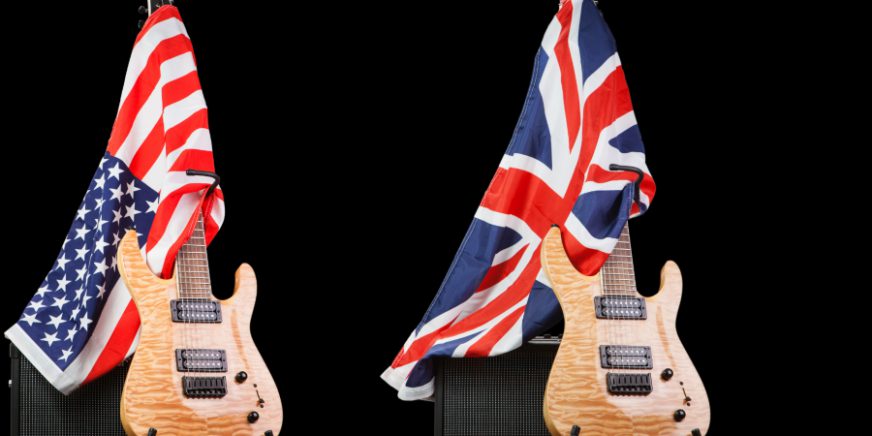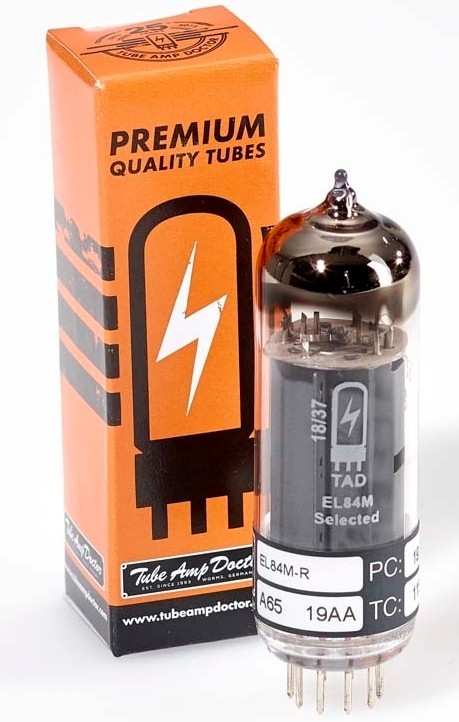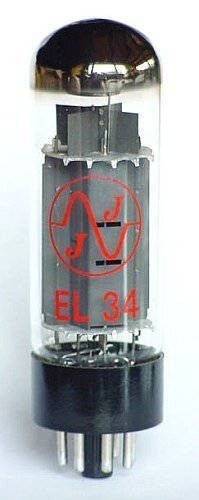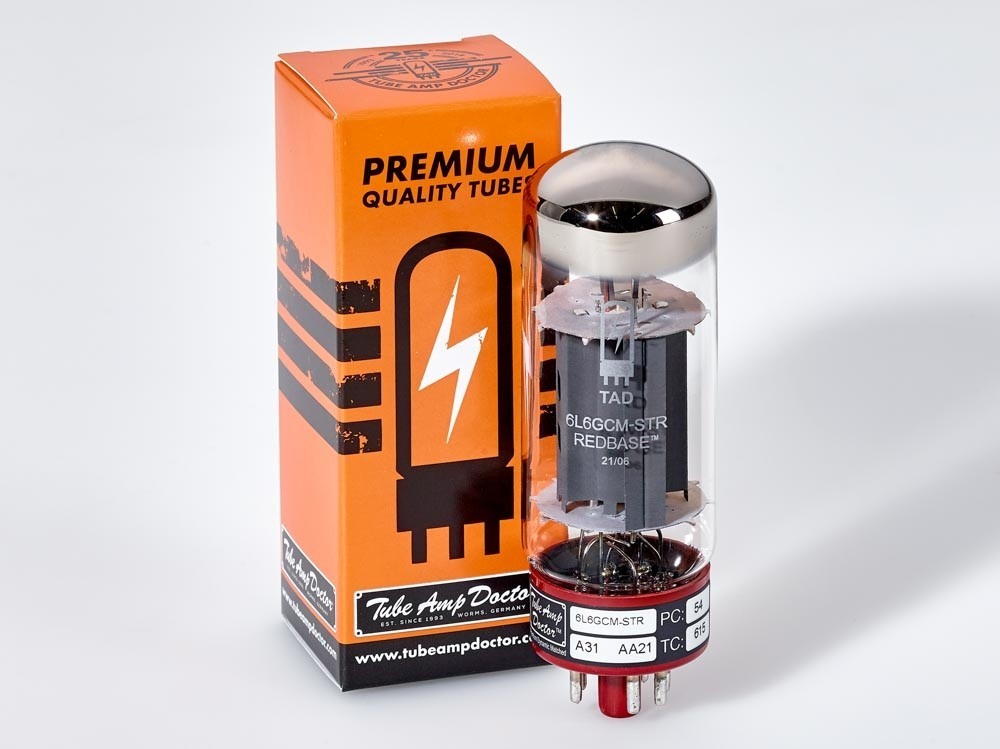« How audible is the difference? »
Today, we’ll delve into one of the prominent discussions that internet forums and trade magazines have been concerned with, with endless patience and enthusiasm ever since the advent of guitarists: The inquiry into what constitutes the “American amp sound” and the “British amp sound,” and which amplifiers are capable of creating these distinctive tones. One thing needs to be clarified from the outset: We’re not attempting to present a universally applicable definition. Instead, our aim is to engage with the topic and provide context through various examples. Beyond considerations of device origins, blending, music genres, and preferences, our primary focus is on a fundamental challenge in the realm of music literature: How do we effectively articulate sound characteristics?
British ampsound vs. American ampsound – how (maybe) it all began
Many legends abound concerning the origins of the prevalent guitar sounds we encounter today – including the descriptors “American” and “British.” There are accounts of manufacturers who exclusively sourced local suppliers for their products, of extraordinary guitarists who influenced sound with their unique playing styles, and even of distinct listening preferences within the public. Anecdotes about the impact of American house construction on the bass elements in mixed music can also be unearthed with some online searching.
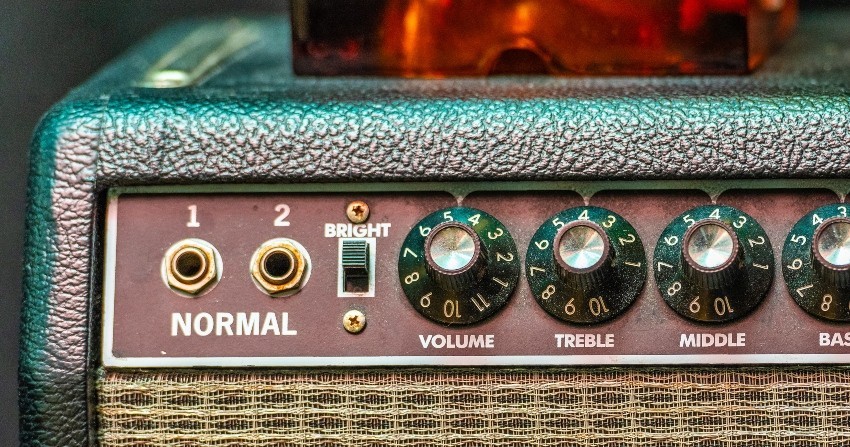
Regardless of whether some or all of these viewpoints are justified or not, there exists a noticable difference in the sound of the electric guitar (still relevant today) that warrants investigation. For instance, as far back as 1966, George Harrison, the Beatles’ guitarist and an ardent sound enthusiast, voiced his dissatisfaction that U.S. productions possessed a livelier quality compared to native British recordings. In light of this observation, the band’s equipment was partially substituted and aligned with American standards – Fender, Gibson, and Rickenbacker replaced Gretsch and Höfner. While the extent of this adjustment’s impact on the Beatles’ ’60s sound remains debatable, it’s at least clear that the discourse on American amp sound versus British amp sound traces back to this period. But how do British amp sound and American amp sound manifest in live performances? We investigate the question – as objectively as we can.
British Ampsound vs. American Ampsound – the characteristics
Wherever and whenever the discussion about American Ampsound and British Ampsound may have started – there are different definitions for the sound of these regional classifications. To understand how different sound characteristics came about and continue to come about, we need to take a closer look at guitar amps from different manufacturers. Let’s start with the “typically British” sound characteristics of amplifiers and their manufacturers.

Typically British – amplifiers and sound made in the UK
Although the UK is a comparatively small country, it has had a tremendous influence on music history in general and on the development of amplified guitar sound in particular. The Holy Trinity of British amplifiers is Marshall – VOX – Orange, and their internal design and respective product characteristics have long defined the “British amp sound” in every genre of music. Over time, manufacturers such as Laney or Hiwatt adopted and refined these characteristics. Typical for amplifiers of these British manufacturers is and was the use of EL34 or EL84 tubes in the power amplifier. The very soft resolving and overdriving tubes provide a compressed and “tight” sound.
Marshall
Marshall is next to Fender probably the most famous amp manufacturer in the world. Through innovation, great design and ingenious sound, the British company has cemented its place in music history. With amplifiers like the JCM, DSL or JVM, countless famous guitarists from rock and metal have taken their first steps and even today the untamed sound of a DSL full-stack is impressive. The tendency to compress and break up musically at high volumes gives Marshall a reputation for sounding “dirty” or “snotty.”
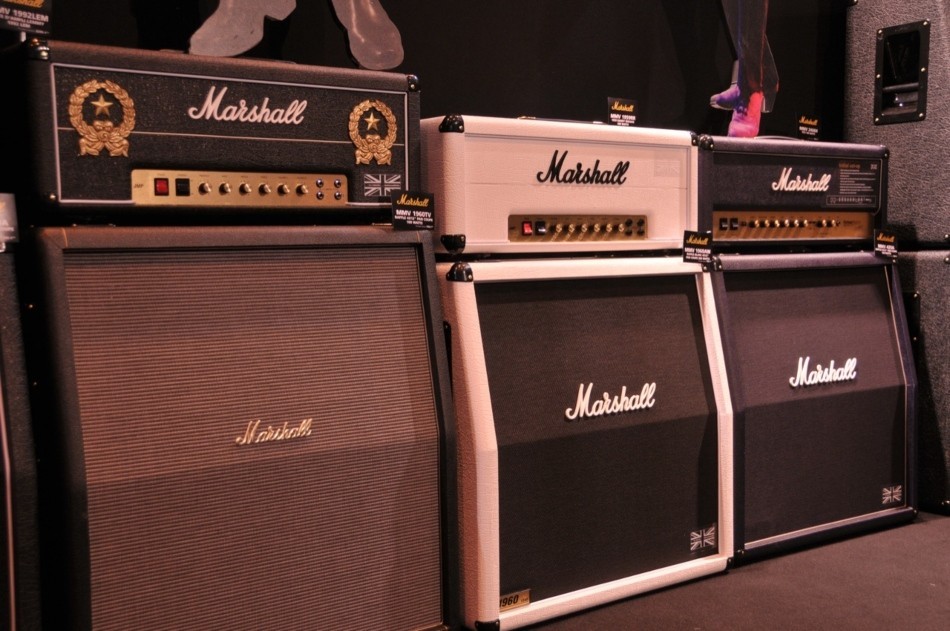
VOX
As a traditional company, VOX is also hard to imagine modern music history without. With the classic AC30 VOX brings a particularly melodic distorting amplifier on the market, which knows how to impress with its clear and striking highs as well as its soft and almost blurred mids. The proper portion of dirt in the distortion of an AC30 have caused famous guitarists such as Brian May of Queen or The Edge of U2 to remain faithful to the VOX for a long time and above all successfully.
Orange
Powerful distortion and concentrated high-gain sounds are the hallmarks of Orange amplifiers – they brought the guitar amps of the British into the focus of modern hard rock and heavy metal bands. The particularly assertive and sometimes brute-force tube amps of the Rockerverb series have left their mark on many a well-known guitarist. But not only distortion, also creamy, singing cleans allow the orange tube amps quite happy.
British amp sound and their manufacturer – a good portion of great dirt
In summary, for the typical British guitar amp, the choice of light and organic distorting tubes in the preamp and power amp established the tradition of British tube amps to sound dirtier and more unbridled. Even away from Marshall and Co. there are many manufacturers (e.g. Laney or Hiwatt) who have remained true to the sound tradition. Here it is not the pure gain reserves that matter. Rather, British amps are characterized by a certain warmth and organic distortion, which the analog tube technology knows how to emphasize particularly beautifully.
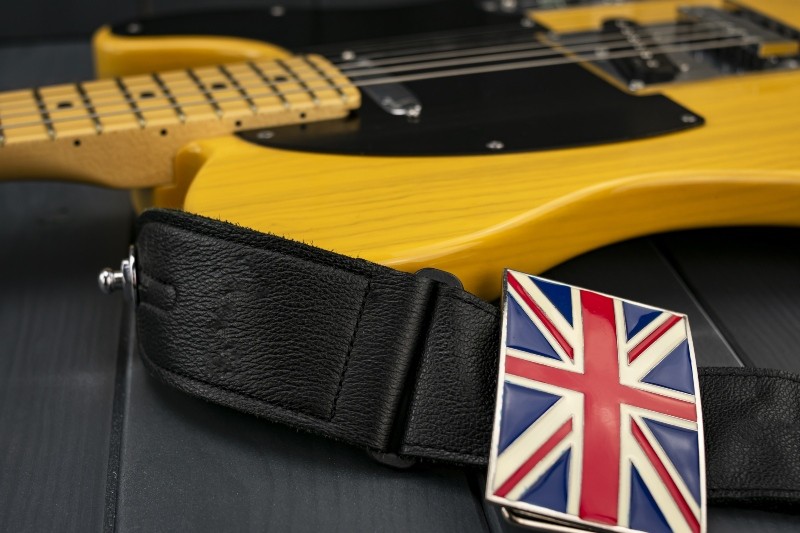
Typically American – amps and sound made in the USA
The influence of the USA on the history of modern music cannot be denied and in this form, at least in Western culture, is unmatched. Hardly a band, hardly a guitarist, who were not at least inspired by individual artists of the United States. So it’s no wonder that amp manufacturers are also a force to be reckoned with in the USA. And unlike in Great Britain, American manufacturers used mainly tubes of the 6L6s or 6L6v type. These tubes have a higher power reserve and break up less quickly – but overdrive them, they appear a little sharper, more cutting and thus establish the typical American amp sound.
Fender
In addition to instruments, Fender has become particularly famous for its numerous, iconic amp models, all of which have a special place in music history. Deluxe Reverb, Hot Rod or Princeton – all the great guitar amps in the company’s history have impressed with large clean reserves (the so-called headroom) and were especially popular among country and blues guitarists because of their incredible volume reserves. The tendency to distort later and keep a high bass content in the distortion while maintaining very clear highs and mids established THE typical Fender sound – until today.
Mesa/Boogie
Today also recognized under the trade name Mesa Engineering, Mesa delivered early on what is commonly perceived today as boutique amps. Exquisitely crafted and fine-tuned amplifiers of the utmost quality remain the hallmark of the Americans. The tone of Mesa/Boogie amplifiers has been geared towards high gain reserves and fundamental tonal fierceness ever since the company’s inception. These tonal attributes have been enthusiastically embraced, particularly by the metal community. Partially described as analytical, the gain tone of Dual Rectifier and co. captivates with substantial compression and a rugged timbre. While Orange exudes a warmer aura, Mesa amps appear more metallic-rough, defining the American timbre.
Made in the USA – concentrated hardness, analytical coldness
American amp tone can therefore be summarized as rather cool and clear. Gain potential and larger clean reserves characterize the sound of amps made in the USA and make up a large part of the American sound. The warm and organic timbre of British amplifiers loses itself with the Americans in a somewhat cutting, assertive and defined. shaping of the sound – with very great success!

American amp sound vs. British amp sound: conclusion
We hope to have given some food for thought to the GB vs. USA discussion with our overview, and at the same time we realize how difficult it is to define subjective sound characteristics of individual amps. Of course, there are many American amps that sound more British-organic. At least as many as there are British amps that are analytically assertive. But one thing is clear: they can all sound great – history has proven that in every musical genre!
___________________________________________________________________________________________________________________________
Image sources:
Title image: © George Dolgikh – stock.adobe.com
Amplifier housing close-up: © Trygve – stock.adobe.com
Sitting guitar player: © sumnersgraphicsinc – stock.adobe.com
Various Marshall amplifiers: © fvancini – https://creativecommons.org/licenses/by/2.0/ | https://de.wikipedia.org/
Guitar with Union Jack badge: © CIGI – stock.adobe.com
Guitar player on stage: © v74 – stock.adobe.com
 Tubeampdoctor Magazin
Tubeampdoctor Magazin
